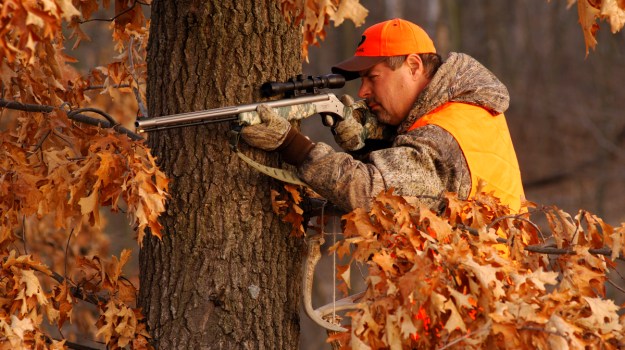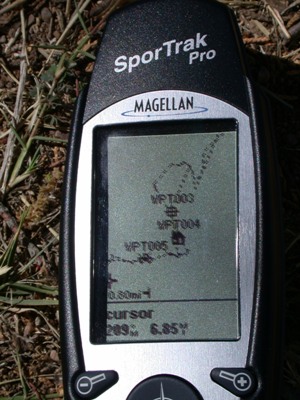
Editor’s Note: Avid hunter Frank Miskey from Lancaster, New York, has been a member of the Mossy Oak ProStaff for 5 years. “I'm still a fan of Mossy Oak Break-Up Infinity, because it’s so versatile. Regardless of the season or terrain, Break-Up Infinity seems to fit into all my hunting situations.”
I'm often asked, “How difficult is finding a place to hunt in New York State?” In New York, we’re fortunate to have a lot of state land to hunt. If you want to hunt private land, you have to be willing to knock on doors and ask permission. And, I believe that 40 percent of the doors you knock on, the landowner will give you permission to hunt their land. New York has a tradition of welcoming hunters. Of course, obtaining permission to hunt private lands, regardless of where you want to hunt, is always affected by how you present yourself. If you come rolling in the day before hunting season starts, more than likely, finding a private place to hunt will be difficult. However, if you come in after the season and talk to and get to know the landowners, you may be surprised at how open they are to letting you hunt their lands the following deer season. I hunt public lands as well as private lands.
The two main secrets to successfully hunting any public lands is to:
- be willing to walk farther into the woods before you start hunting than other hunters will walk; and
- learn how to navigate in the dark.
 I consider the hand-held GPS receiver one of the greatest hunting tools ever to enter the hunting industry. By scouting public lands, especially before the season, by going deep into the woods and marking as many prospective hunting sites as you can as waypoints and then walking back out of the woods and noting the spot where you leave your vehicle as a waypoint, you can find some very productive hunting opportunities. If you go to the area you're planning to hunt before daylight, park your vehicle at the waypoint you’ve marked, and then walk in along the route you’ve marked to one of your prospective stand sites, you can use hunting pressure to push the deer to you, rather than away from you. Also, using this technique, if you get to a stand site where there’s another hunter, or if another hunter interrupts your hunt, you simply can look at your GPS and move to another nearby stand site that you’ve loaded into your GPS. If you’ve hunted these same areas for several years, you should be able to go to your stand sites in the dark, even if you don’t have a GPS.
I consider the hand-held GPS receiver one of the greatest hunting tools ever to enter the hunting industry. By scouting public lands, especially before the season, by going deep into the woods and marking as many prospective hunting sites as you can as waypoints and then walking back out of the woods and noting the spot where you leave your vehicle as a waypoint, you can find some very productive hunting opportunities. If you go to the area you're planning to hunt before daylight, park your vehicle at the waypoint you’ve marked, and then walk in along the route you’ve marked to one of your prospective stand sites, you can use hunting pressure to push the deer to you, rather than away from you. Also, using this technique, if you get to a stand site where there’s another hunter, or if another hunter interrupts your hunt, you simply can look at your GPS and move to another nearby stand site that you’ve loaded into your GPS. If you’ve hunted these same areas for several years, you should be able to go to your stand sites in the dark, even if you don’t have a GPS.
We do a lot of our new scouting with maps. We search for natural bottlenecks, funnels, creeks, ravines and changes of elevation. But mainly, we look for some different type of topography from the rest of the area’s topography. When we go in to scout, we search for scrapes, rubs, droppings, deer trails and tracks. Studying maps can save time and walking when you’re hunting a public hunting area you’ve never previously hunted. We use topo maps as wells as aerial photo maps. Once we get in and start finding deer sign, we try to follow the deer sign to a bedding area - often a thick-cover place. When we've located the deer’s bedding region, we want to make sure we stay well away from there to not spook the deer going into or coming out of the bedding site. Our philosophy is to try to harvest the does or bucks that are on the way to or coming from the bedding area, but not so close to the bedding area that when we harvest them, the deer in the bedding area are disturbed.
Two other places my hunting friends and I look for are:
- escape trails out of a bedding area; and
- the primary food source in that region.
From this information, we can pick the best deer trails to hunt where we won’t spook the deer as they travel to and from their beds. When we take shots, we won’t spook the deer out of their feeding or bedding areas.
We expect to harvest a deer on every hunt and always take a frame pack or some type of game cart with us to carry our deer out. Often, we’ll roll a game cart in close to the area we’re hunting and hide it in some brush. Then, we don’t have to walk all the way back to our vehicle to get the game cart to roll the deer out. Sometimes hunters won’t go deep into the woods on public lands, because they're afraid they’ll take big bucks and have to drag them out by themselves. However, if you prepare to take a nice deer, and you're confident you can get that deer out of the woods without much stress and strain, then going deep into the woods is much easier mentally.
To learn more about hunting, check out John E. Phillips’ new eBook and print book, “Bowhunting Deer: Mossy Oak Pros Know Bucks and Bows.” You also can download a free Kindle app that enables you to read the book on your iPad, computer or Smartphone.
For information on making jerky from your deer to provide a protein-rich snack, you can download a free book from http://johninthewild.com/free-books.
Day 3: I Took a Shot at 273 Yards with My Muzzleloader
Tomorrow: Suburban Hunting Opportunities Growing in New York






























